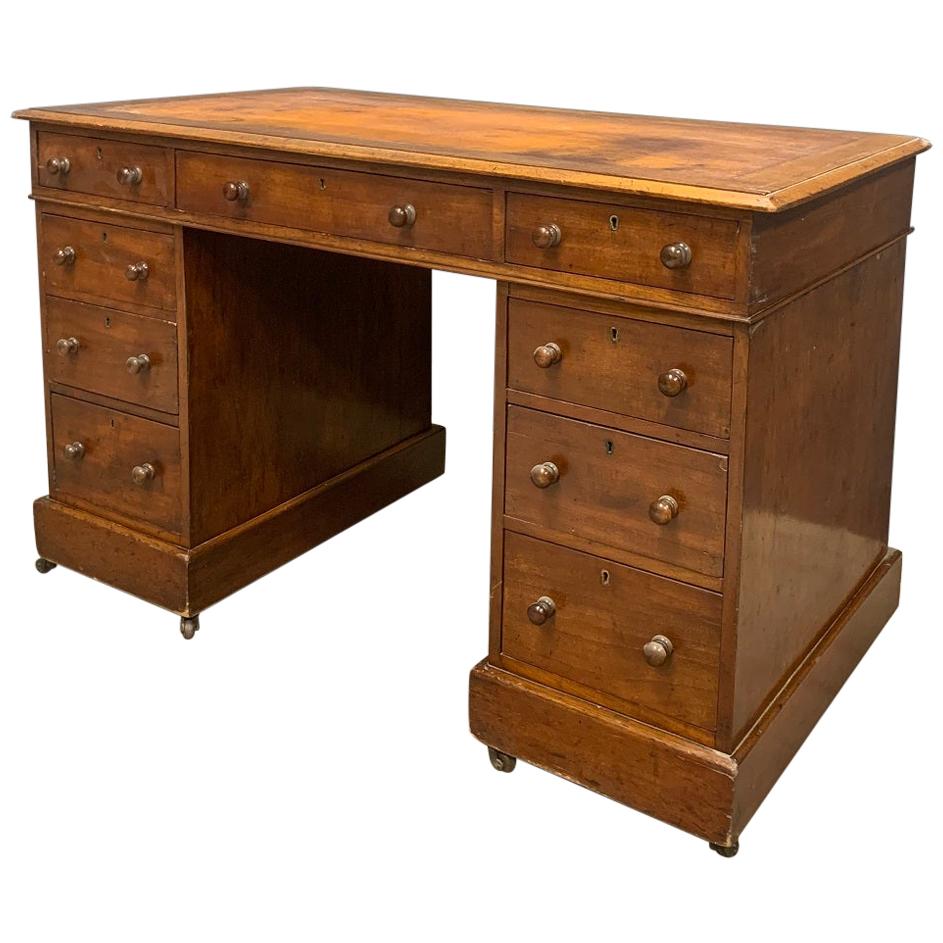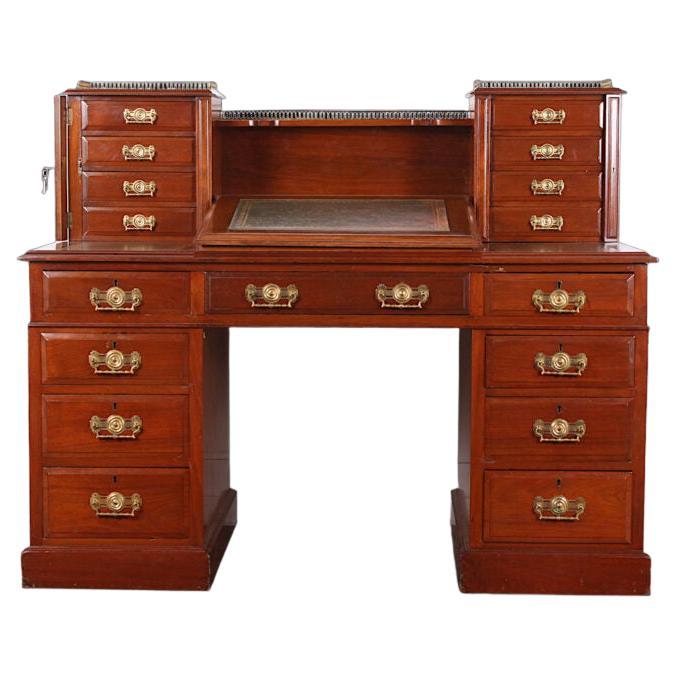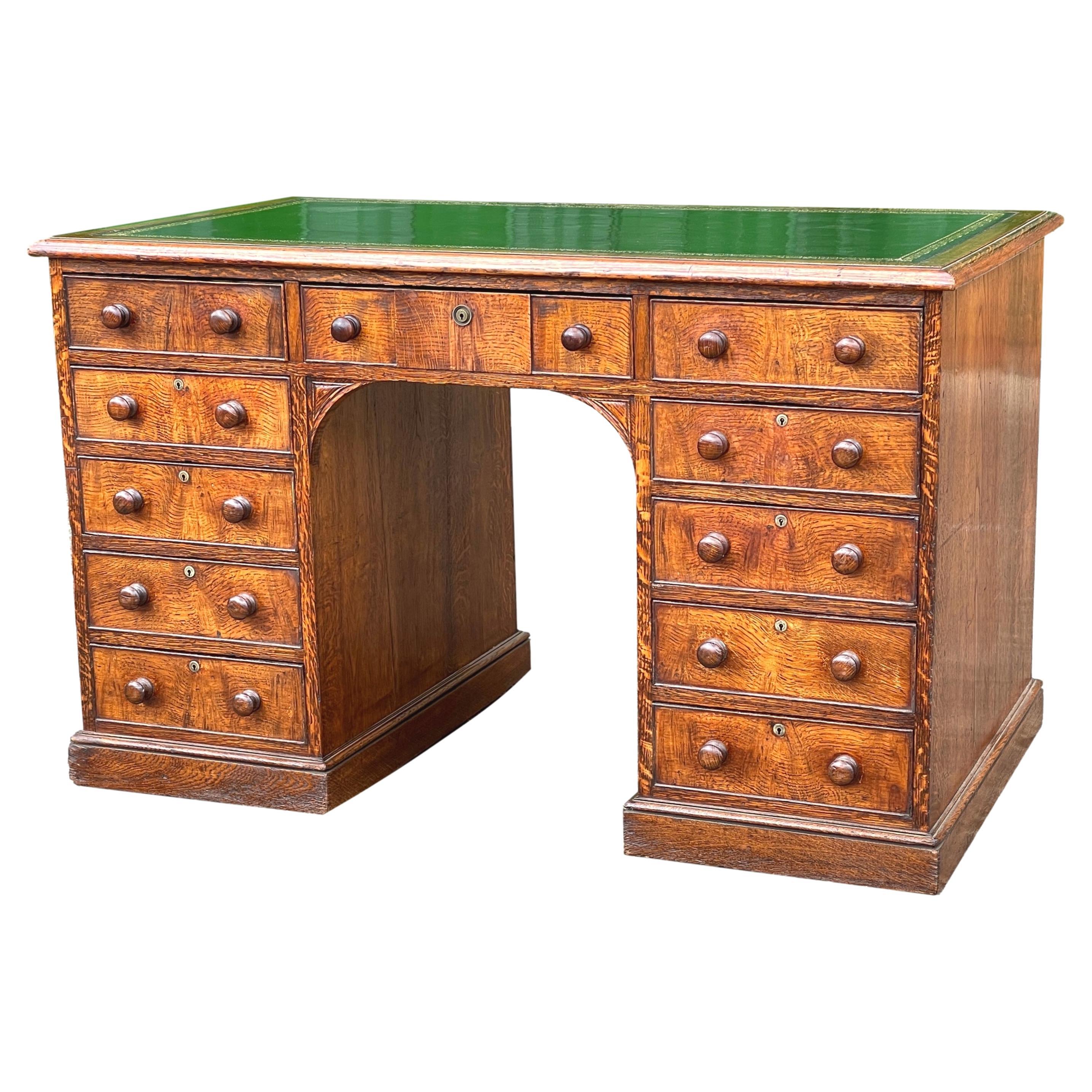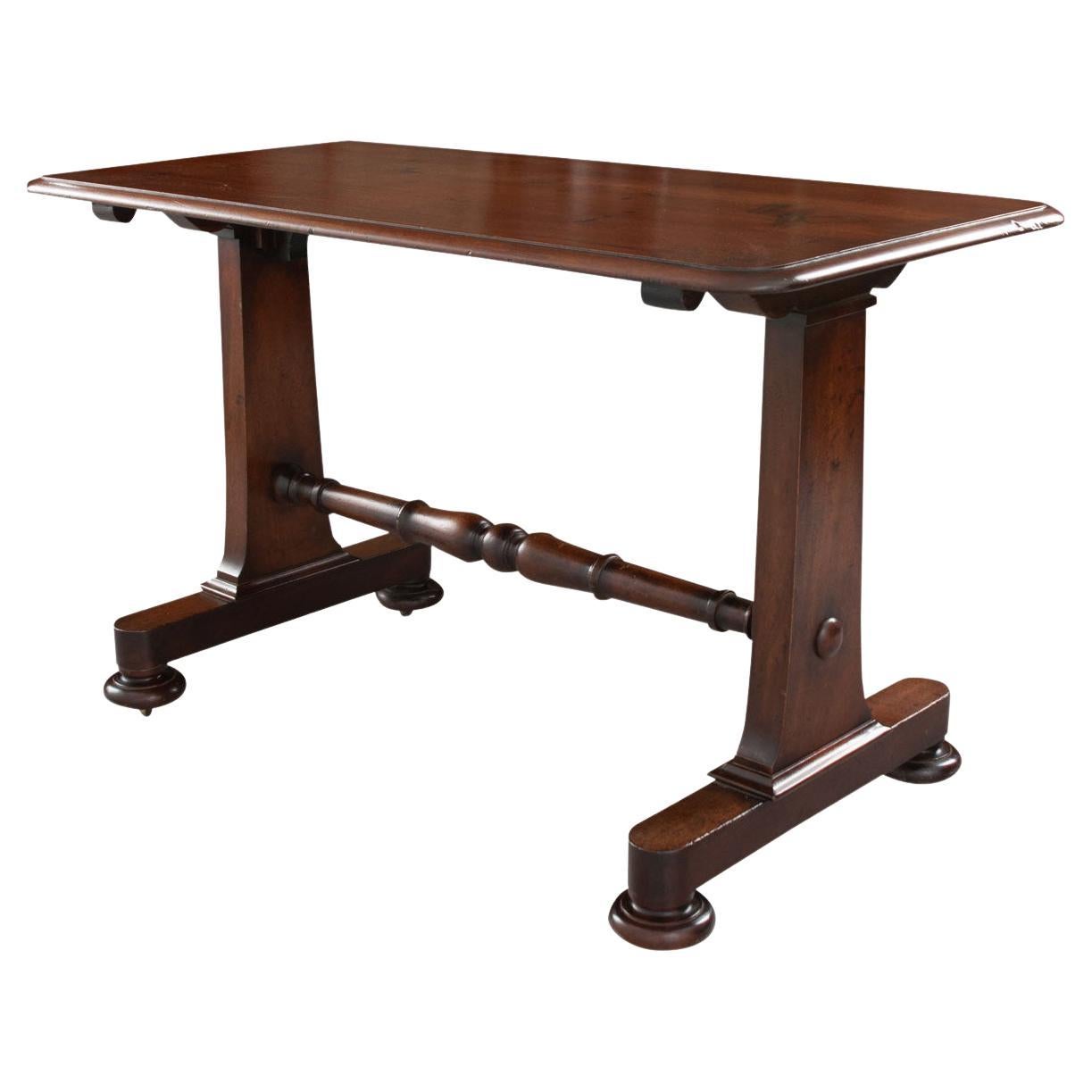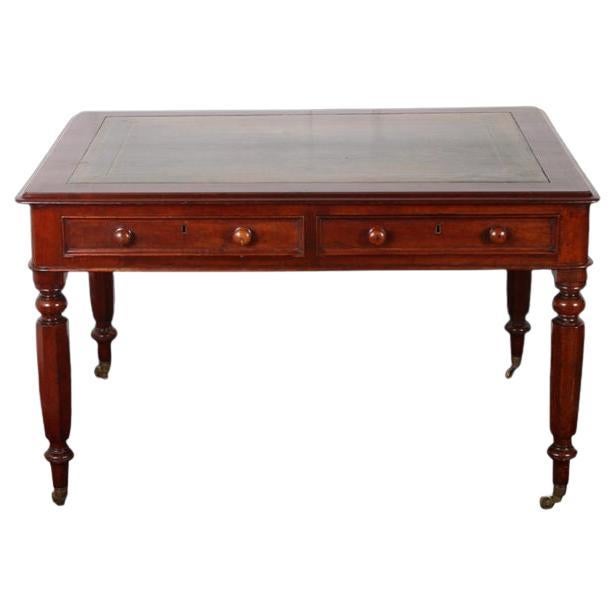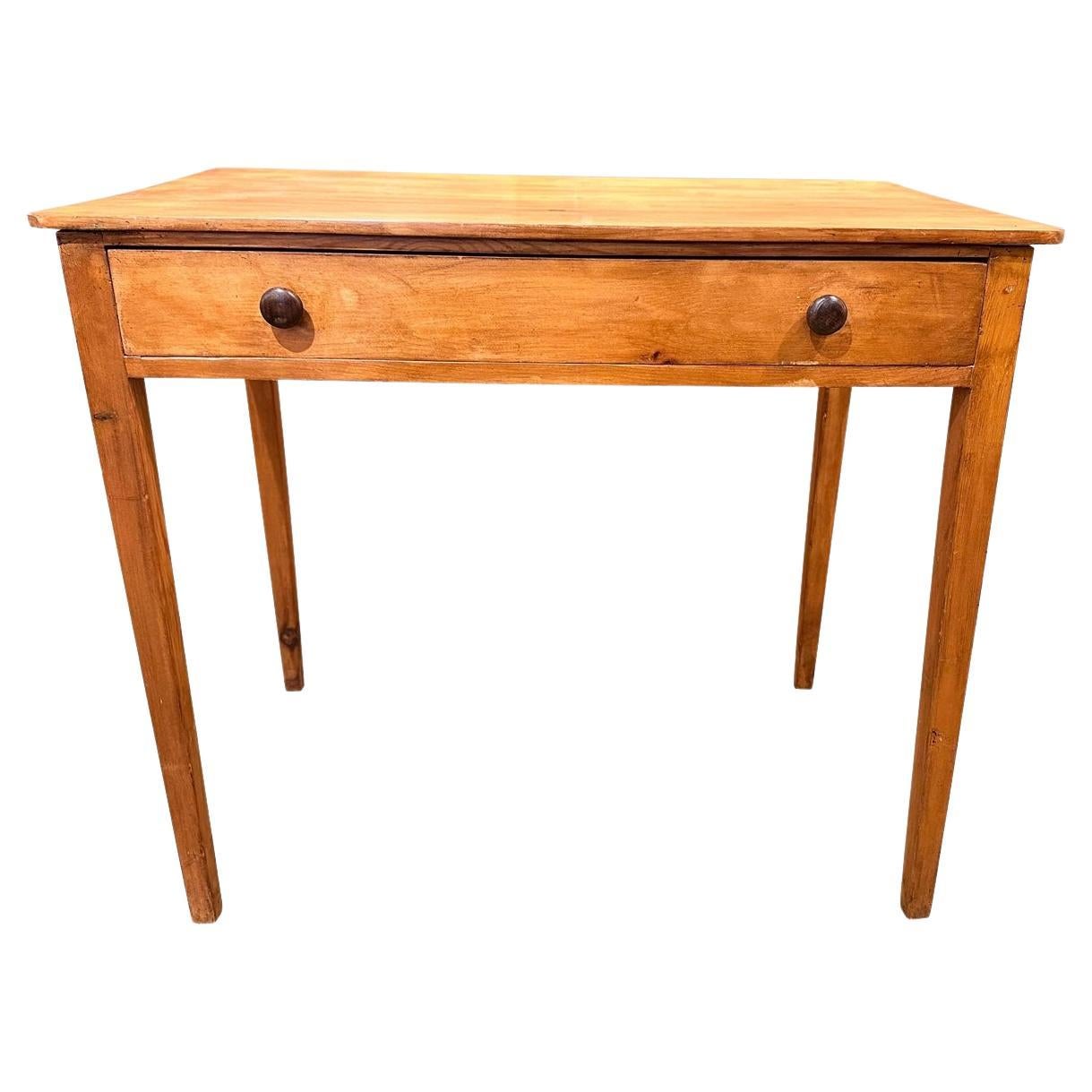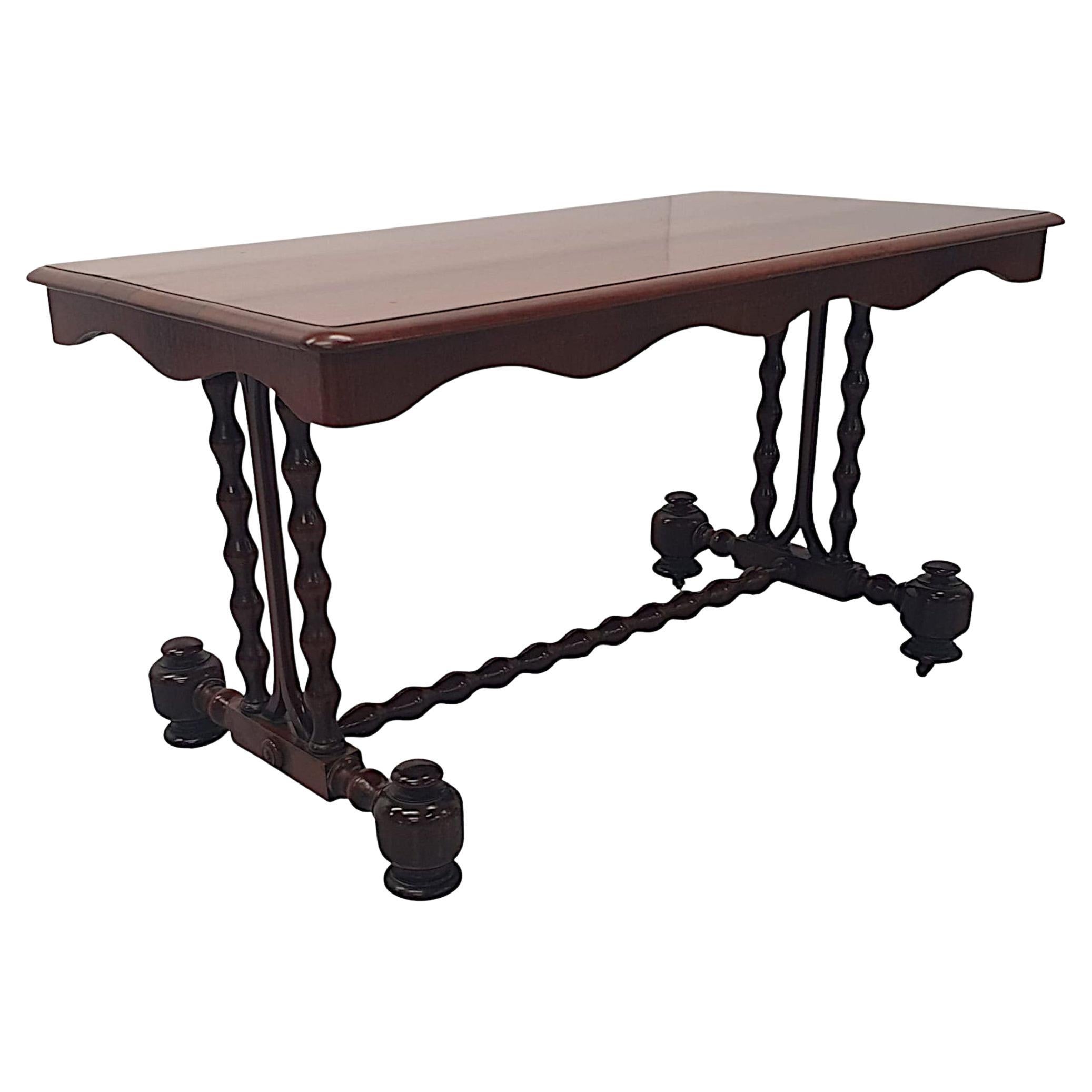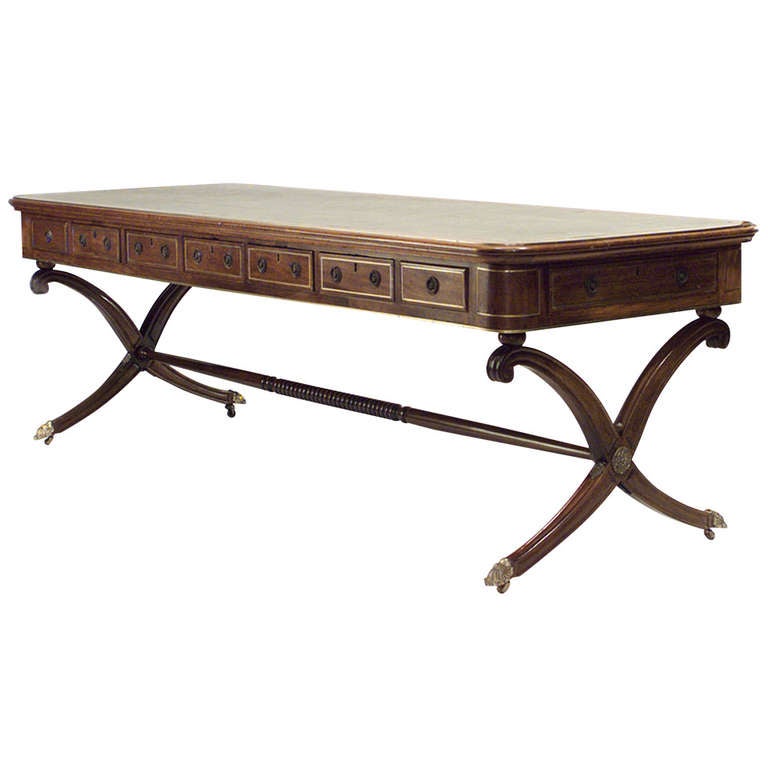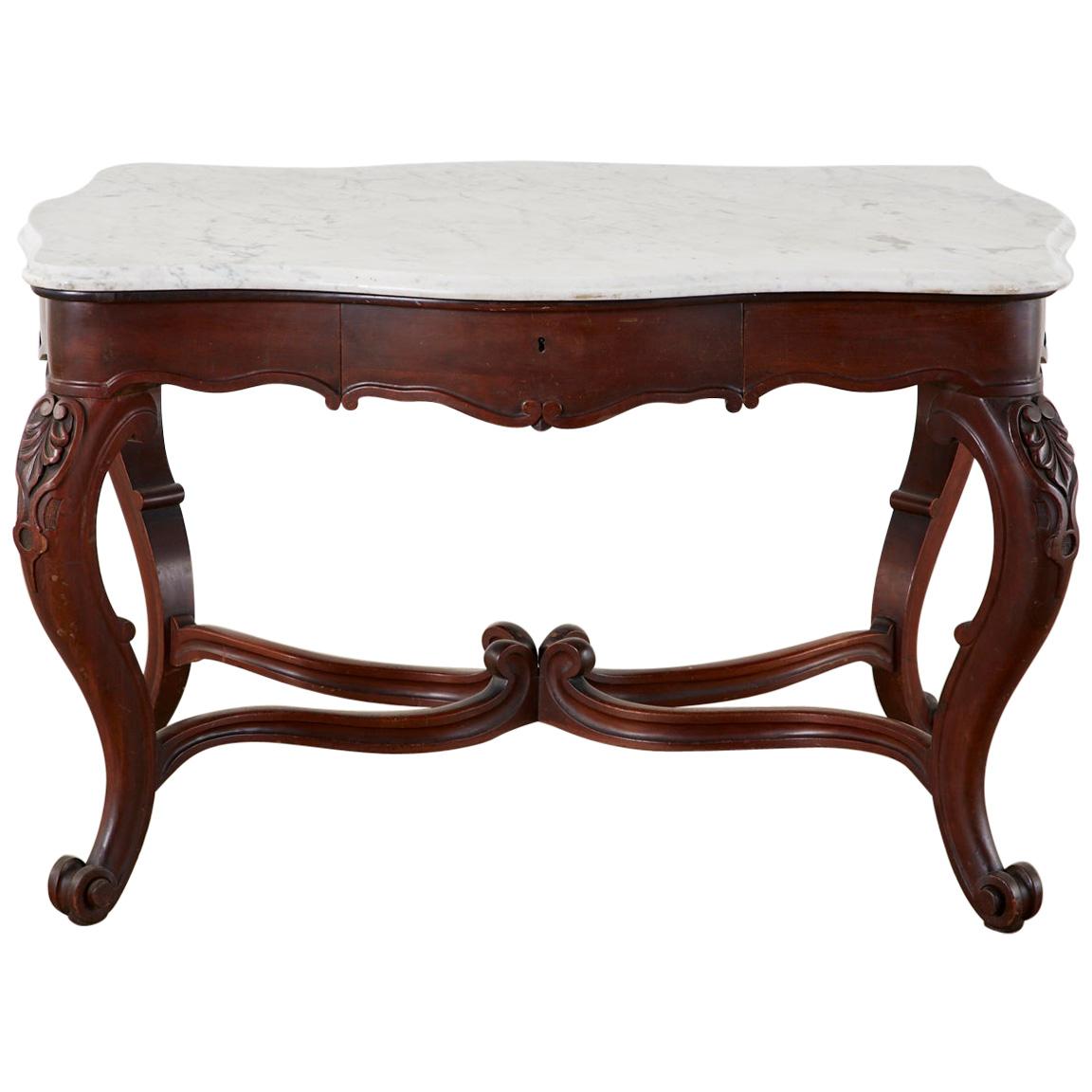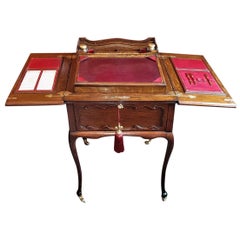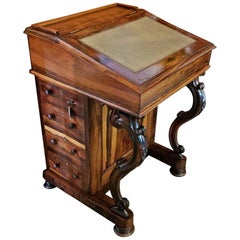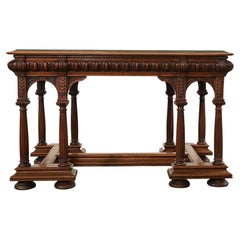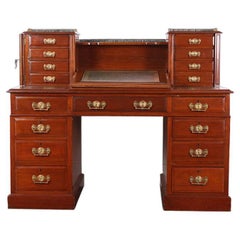
19th Century English St Paul's Churchyard Library Desk
View Similar Items
Want more images or videos?
Request additional images or videos from the seller
1 of 17
19th Century English St Paul's Churchyard Library Desk
About the Item
- Dimensions:Height: 31 in (78.74 cm)Width: 55.75 in (141.61 cm)Depth: 30.75 in (78.11 cm)
- Style:Early Victorian (Of the Period)
- Materials and Techniques:
- Place of Origin:
- Period:
- Date of Manufacture:1840-1860
- Condition:Wear consistent with age and use. Very good original condition. Some discoloration and scratches to original leather top and one very minor repair to the trim on the left hand drawer.
- Seller Location:Dallas, TX
- Reference Number:1stDibs: LU3978116582801
About the Seller
4.9
Gold Seller
These expertly vetted sellers are highly rated and consistently exceed customer expectations.
Established in 2015
1stDibs seller since 2018
349 sales on 1stDibs
More From This SellerView All
- Rare 19th Century English Eclipse Patented Telescopic DeskLocated in Dallas, TXPresenting an exceptionally rare 19th century English eclipse patented telescopic desk. Made of oak in the Rococo style in Great Britain, circa 1880. Fully marked as “The Eclipse” ...Category
Antique Late 19th Century English Late Victorian Desks
MaterialsBrass
- Early 19th Century British Davenport Desk in the Manner of GillowsLocated in Dallas, TXPRESENTING AN ABSOLUTELY STUNNING Early 19C British Rosewood Davenport Desk in the Manner of Gillows circa 1830. A Davenport is a type of writ...Category
Antique Early 19th Century English William IV Desks and Writing Tables
MaterialsHardwood
- 19th Century Standard Grade Wooton DeskBy Wooton Desk Co.Located in Dallas, TXPresenting a highly desirable and quite rare 19th century standard grade Wooton desk. This desk was made in Indiana, circa 1880 by the Wooton Desk Co. Made of walnut and burled walnut. Black cast iron hardware. Fully marked. In the Gallery we have excepts from the Smithsonian Institution publication concerning the history of “The King of Desks ….Wooten Patent Secretary” by Betty Lawson Walters (a copy of which will be furnished with the desk upon purchase). Wooten Desks...Category
Antique Late 19th Century American Late Victorian Desks
MaterialsWalnut
$10,725 Sale Price44% Off - 19th Century British Tunbridge Ware Lap DeskBy Tunbridge WareLocated in Dallas, TXPresenting an absolutely gorgeous and extremely unique and rare 19th Century British Tunbridge ware lap desk. This lap desk is unlike any of it’s kind we have seen before. From cir...Category
Antique Mid-19th Century English High Victorian Decorative Boxes
MaterialsMaple, Walnut, Satinwood, Ebony, Wood
- 19th Century English Burl Walnut Sutherland TableLocated in Dallas, TXLate 19th century English drop-leaf table from the Mid-Victorian Era. Made of gorgeous yellowish-brown walnut with a fantastic burl walnut table top. The patina on the top is simply glorious!! The table was made circa 1850-60. It sits on beautifully turned fluted legs with the porcelain and brass casters. Two of the legs swing inwards and outwards to extend the 2 leaves of the table. Fully extended the table has a fabulous curved and indented edge, in an oval shape on both ends. The center column is beautifully turned and fluted. The 2 side columns are again beautifully turned and fluted and end with 2 extending scrolling supports that end in turned bulbous twin feet. This is a high quality item and highly desirable! Antique Sutherland Tables...Category
Antique Mid-19th Century English High Victorian Side Tables
MaterialsWalnut, Burl
- Rare 19th Century English Tunbridgeware Hair Pin or SlideLocated in Dallas, TXPresenting an absolutely gorgeous and extremely unique and rare 19th century British Tunbridgeware hair pin/bobbin or slide. This slide is unlike any of it’s kind we have seen before…. it is a very rare survivor ! From circa 1860–1880. Made of walnut with gorgeous marquetry inlay on the entirety of the front with classic Tunbridgeware micro-mosaic all over the front. The rear is walnut. The marquetry inlay appears to be various different woods, namely, maple, walnut and satinwood. Would have been worn in a Lady’s hair bun with the micro-mosaic facing forward. This would have belonged to a very elegant lady in the mid to late 19th century. Tunbridge ware is a form of decoratively inlaid woodwork, typically in the form of boxes, that is characteristic of Tonbridge and the spa town of Royal Tunbridge Wells in Kent in the 18th and 19th centuries. The decoration typically consists of a mosaic of many very small pieces of different coloured woods that form a pictorial vignette. Shaped rods and slivers of wood were first carefully glued together, then cut into many thin slices of identical pictorial veneer with a fine saw. Elaborately striped and feathered bandings for framing were pre-formed in a similar fashion. There is a collection of Tunbridge ware in the Tunbridge Wells Museum and Art Gallery in Tunbridge Wells. The famous makers of Tunbridge ware were in the Tunbridge Wells area of Kent; their most notable work was from circa 1830-1900. Early makers of Tunbridge ware, in Tunbridge Wells in the mid-18th century, were the Burrows family, and Fenner and Co. In the 19th century, around 1830, James Burrows invented a technique of creating mosaics from wooden tesserae. Henry Hollamby, apprenticed to the Burrows family, set up on his own in 1842 and became an important manufacturer of Tunbridge ware, employing about 40 people. Edmund Nye (1797–1863) and his father took over the Fenner company when William Fenner retired in 1840, after 30 years in partnership with him. Thomas Barton (1819–1903), previously apprenticed at the Wise factory, joined the Nyes in 1836, and worked as Nye’s designer; he took over the business in 1863 and continued there until his death. In Tonbridge (near to Tunbridge Wells), George Wise (1703–1779) is known to have had a business in 1746. It continued with his son Thomas, and Thomas’s nephew George (1779–1869), who took over in 1806. In its early years the company made articles such as workboxes and tea caddies with prints of popular views; later items had pictures created from mosaics. Their workshop in Tonbridge, Wise’s Tunbridge Ware Manufactory, was next to the Big Bridge over the Medway; the building was demolished in 1886 to widen the approach to the bridge. Tunbridge ware became popular with visitors to the spa town of Tunbridge Wells, who bought them as souvenirs and gifts. Articles included cribbage boards, paperweights, writing slopes, snuffboxes and glove boxes. At the Great Exhibition of 1851, Tunbridge ware by Edmund Nye, Robert Russell and Henry Hollamby was shown; Edmund Nye received a commendation from the judges for his work. He exhibited a table depicting a mosaic of a ship at sea; 110,800 tesserae were used in making the picture. The manufacturers of Tunbridge ware were cottage industries, and they were no more than nine in Tunbridge Wells and one in Tonbridge. The number declined in the 1880s; competent craftsmen were hard to find, and public tastes changed. After the death of Thomas Barton in 1903 the only surviving firm was Boyce, Brown and Kemp, which closed in 1927. Marquetry was an old technique which was continued by Nye and Barton to create images such as birds or butterflies. ‘Green Oak’ as caused by the fungus Chlorociboria aeruginascens. Stickware and half-square mosaic was invented by James Burrows in about 1830: a bunch of wooden sticks of different colours, each having triangular or diamond-shaped cross section, were tightly glued together; in the case of stickware, the resulting block was dried, then turned to form an article such as the base of a pincushion. For half-square mosaic, thin slices were taken from the composite block, and applied to a surface.[1][2][4] Tesselated mosaic, was a development by James Burrows of half-square mosaic; it was adopted by George Wise and Edmund Nye. Minute tesserae were used to form a wide variety of geometric and pictorial designs. Many sorts of wood were used for the various colours; about 40 were in regular use. Only natural colors were used; green was provided by “green oak”, produced by the action of fungus on fallen oak. Designs for articles were often taken from designs of Berlin wool work.Category
Antique Late 19th Century English High Victorian Collectible Jewelry
MaterialsSatinwood, Walnut
You May Also Like
- 19th Century English Walnut DeskLocated in Vosselaar, BEA charming walnut desk. Made in England in the late 19th century. Lovely patine throughout. Panneled back, leather inset, castor wheels. Chairspace is 62.5 H x 52 W cms.Category
Antique 1890s British Victorian Desks and Writing Tables
MaterialsWalnut
- 19th Century Neoclassical Style English Oak Library Table DeskLocated in Rio Vista, CADramatic 19th century English library table, writing table, or desk hand-crafted from oak. The table features a trestle style base with Greco-Roman corinthian columns in the neoclass...Category
Antique 19th Century English Neoclassical Desks and Writing Tables
MaterialsBrass
- 19th Century English Walnut Dickens DeskLocated in Vancouver, British ColumbiaAn impressive English Victorian walnut ‘Dickens’ desk, so-called because a desk of similar design used by Charles Dickens. The desk features two banks of ...Category
Antique 19th Century English Victorian Desks
MaterialsWalnut
- English 19th Century Oak Pedestal DeskLocated in Bedfordshire, GBA Very Good Quality, One Piece, Mid 19th Century Oak Pedestal Desk Of Eleven Drawers Having Replacement Gilt Tooled Leather Top And Original Turned W...Category
Antique Mid-19th Century English Victorian Desks
MaterialsOak
$7,023 Sale Price20% Off - English 19th Century Writing DeskLocated in Baton Rouge, LAWe love the design of this simple yet sophisticated mahogany desk! There is no storage in this desk which is perfect for today’s office which usually consists of just a laptop. The t...Category
Antique 19th Century English Other Desks and Writing Tables
MaterialsMahogany
Sold$4,800 - 19th Century Victorian Solid Mahogany Library DeskLocated in Vancouver, British ColumbiaSolid Mahogany Victorian writing table or library desk. C.1880. Finished on both sides with each side having a pair of drawers. Original leather in distressed condition. Commensurate...Category
Antique 19th Century British Desks and Writing Tables
MaterialsLeather, Wood
